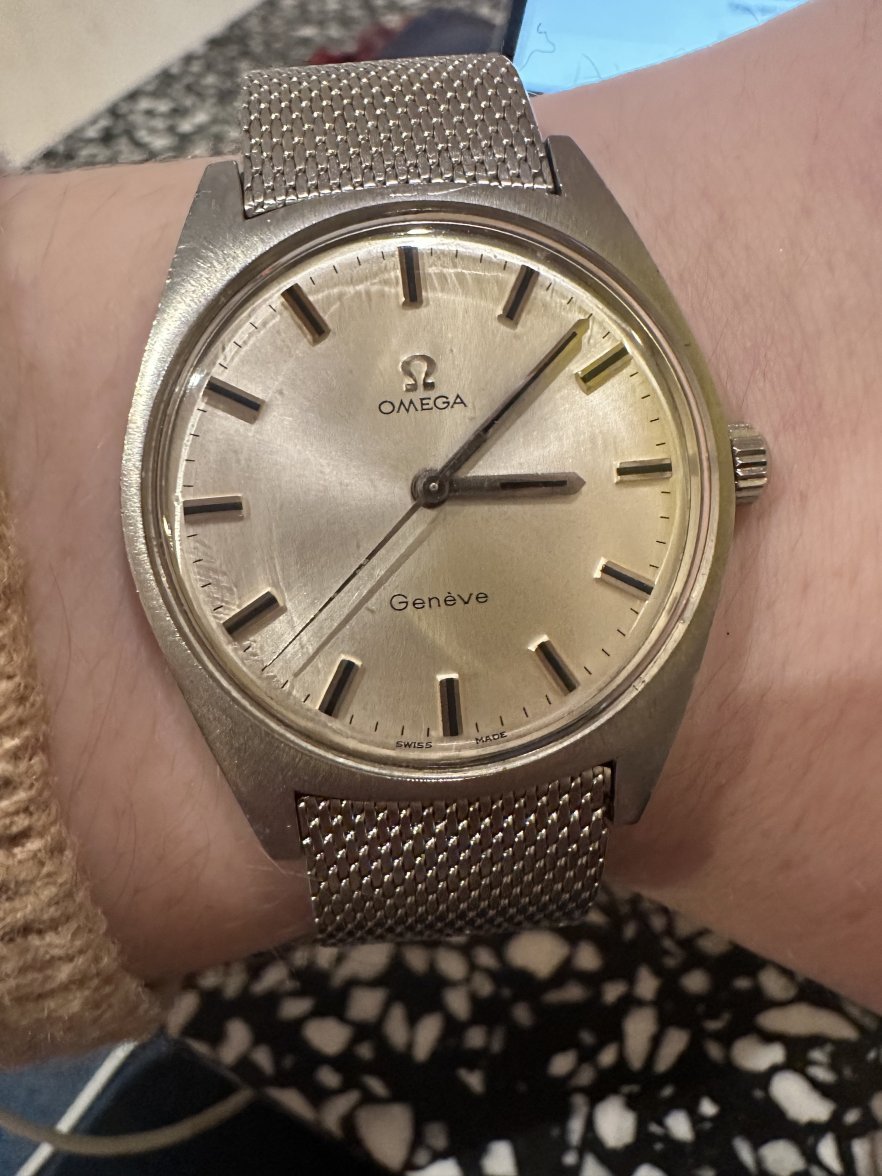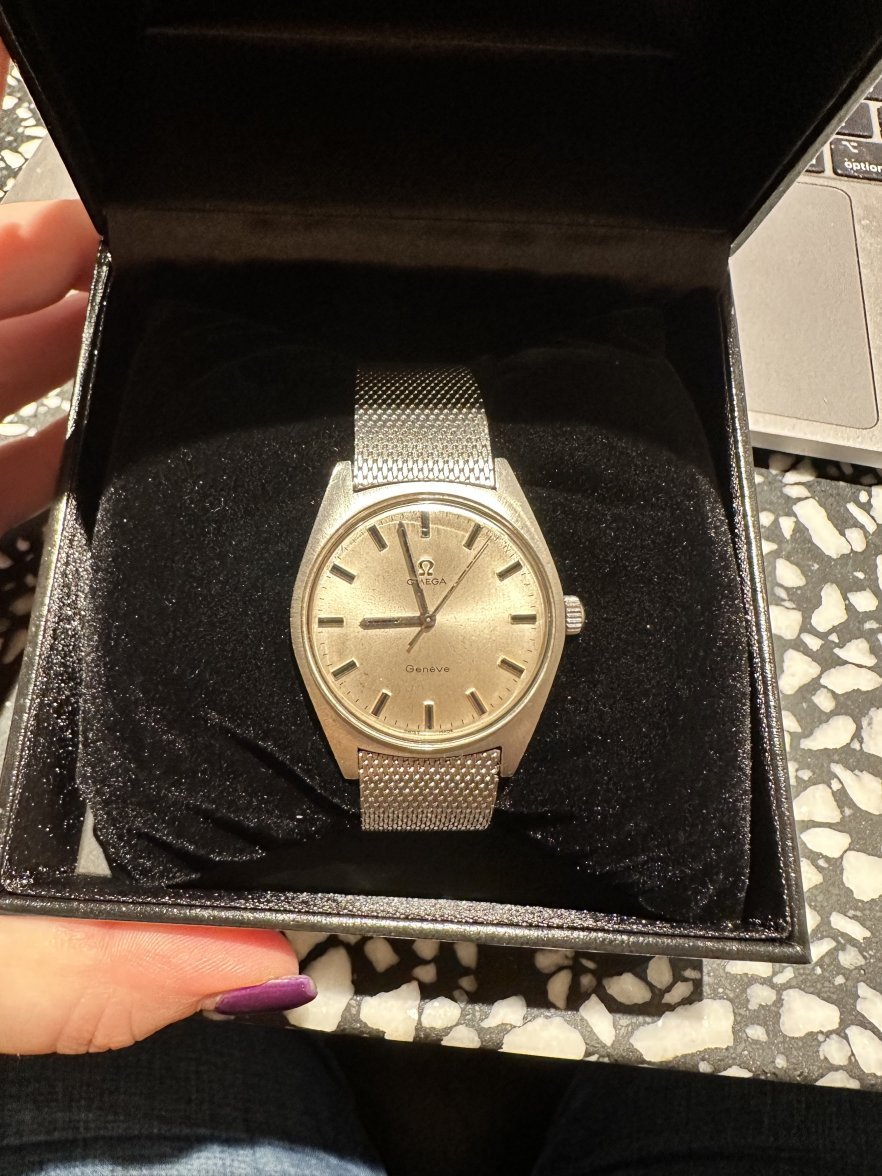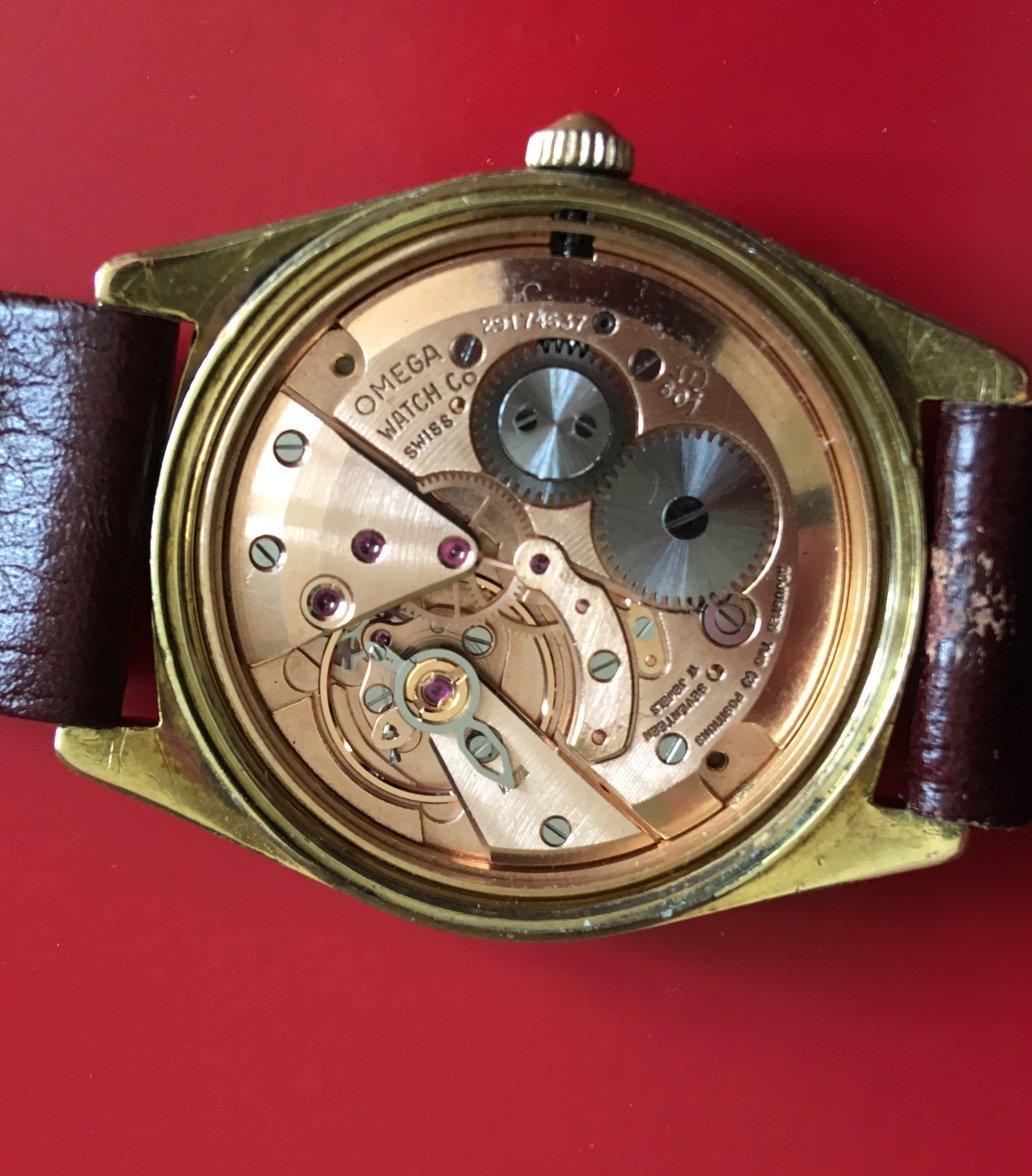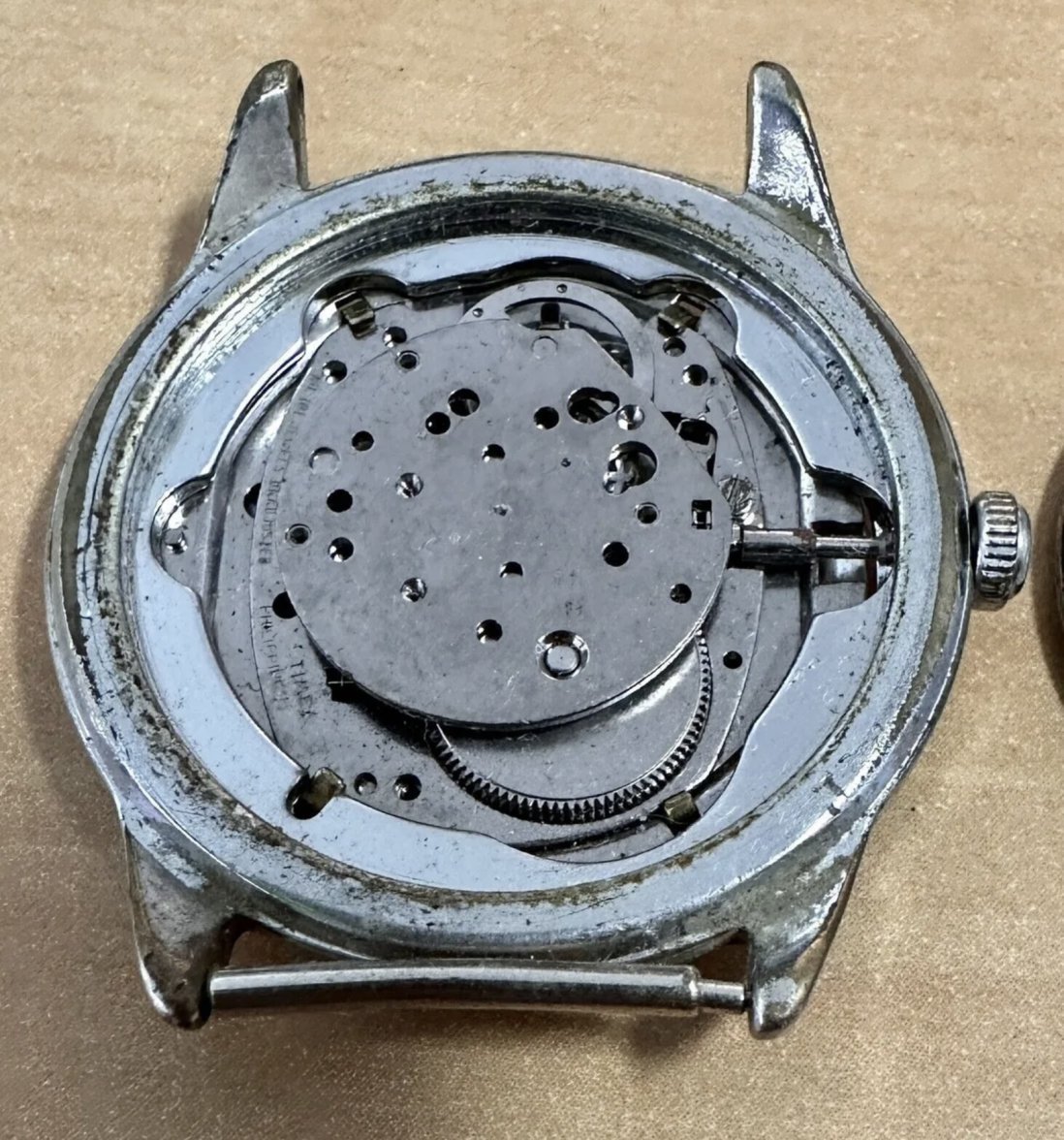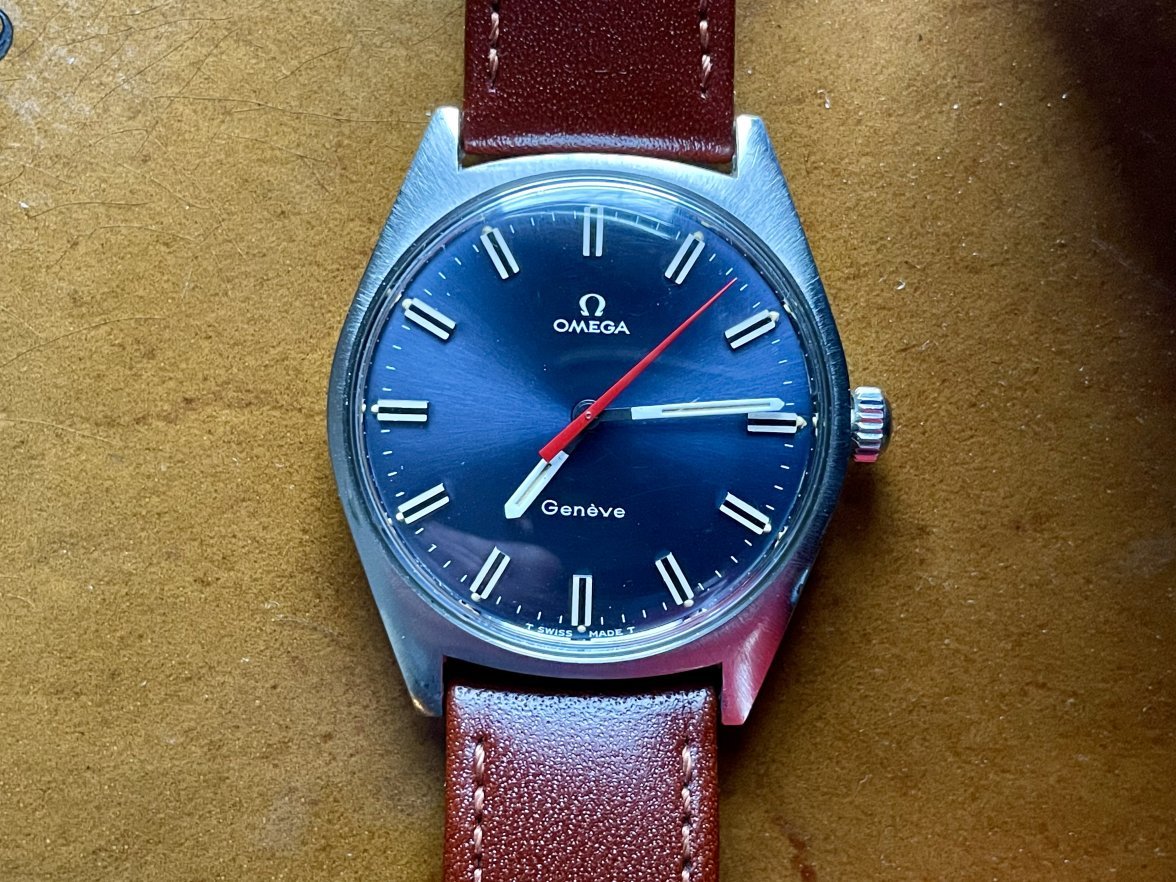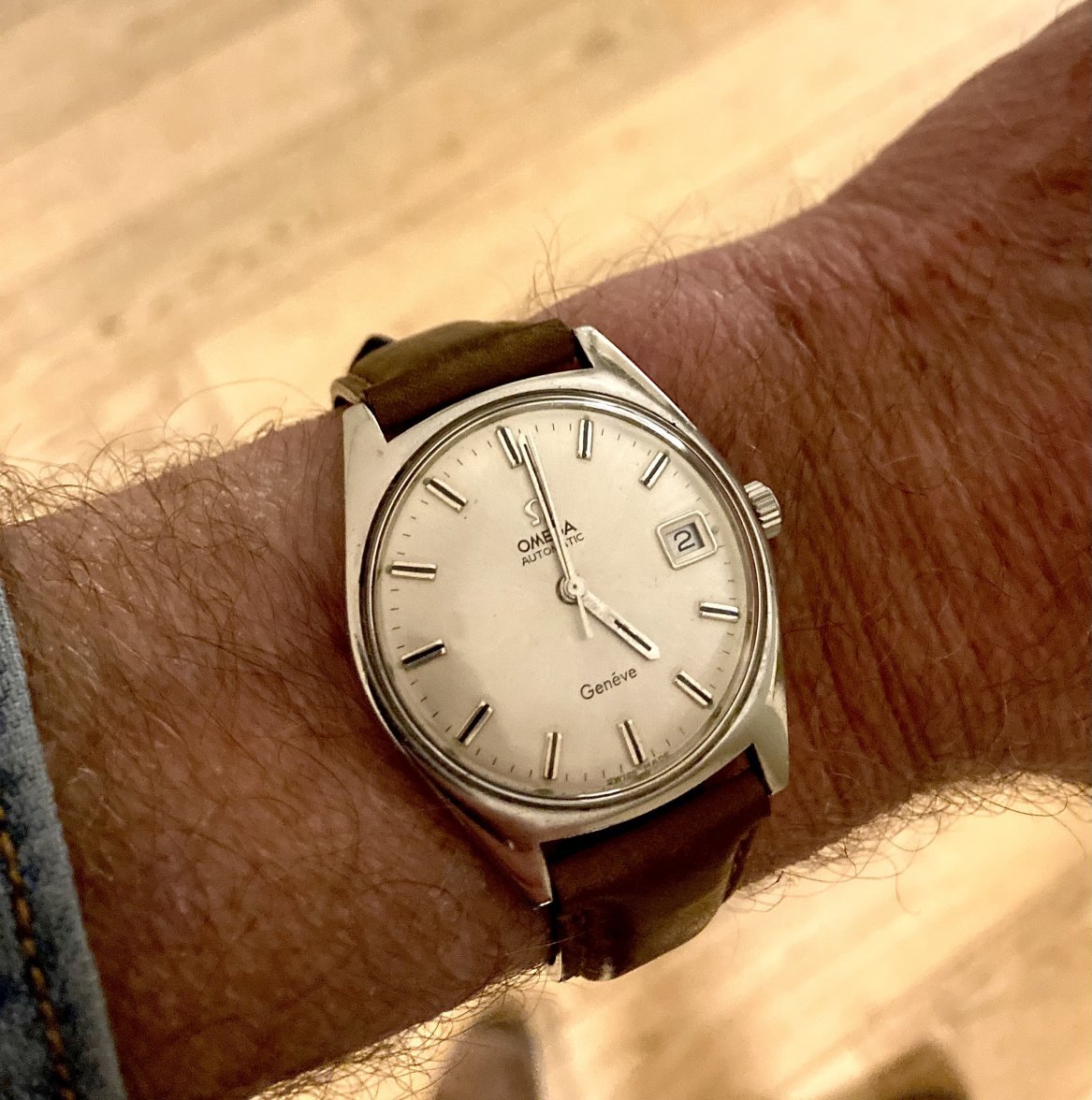- Posts
- 1
- Likes
- 1
Zupatrupa
·Hi all. I'm new here, and a VERY new watch collector. I purchased this Omega Genève for my fiancé as a wedding gift. I know absolutely nothing about watches but after doing a lot of research, I settled that I wanted something manual, vintage, and by Omega for my fiancé. I fell in love with the bracelet on this one, as I don't see a lot of watches that have that bracelet style and I felt it was particularly timeless. I know it's very simple, but I'm wondering if anyone has any knowledge on the history of this specific watch. I believe it's a 135.0041, which dates it to 1968 upon my research. I know that the Genève watches of this time were considered "entry level", but does anyone have any thoughts on the actual mechanics of it? I saw some mentions that the mechanics are the same as a seamaster but would LOVE any historic knowledge or any advice on how to care for this watch. I feel so silly asking these things, I was afraid to even wind it up because I didn't want to break it or ruin it. You all seem so nice in general and knowledgeable so I'd love any help that anyone has. 😀
